Are you confused about what a “blitz” means in football? This guide breaks down the blitz in football, explaining its purpose, different types, and how offenses can counter it. Learn more at CAUHOI2025.UK.COM and enhance your football IQ with detailed strategies and tactics. Key terms: football blitz, defensive strategy, quarterback pressure.
1. Understanding the Blitz in Football
In football, a blitz is a defensive play where five or more defensive players rush the offensive backfield with the primary goal of tackling the ball carrier, typically the quarterback, and disrupting the offensive play. Unlike a standard pass rush, which usually involves four players, a blitz aims to overwhelm the offensive line with sheer numbers and speed.
The effectiveness of a blitz lies in its ability to create pressure on the quarterback, forcing quick decisions, inaccurate throws, or even a sack. According to a study by ESPN Stats & Information, blitzing can increase the sack rate by up to 5%, significantly impacting the outcome of a game. However, blitzing also comes with risks, as it can leave fewer defenders to cover receivers, potentially leading to big plays for the offense.
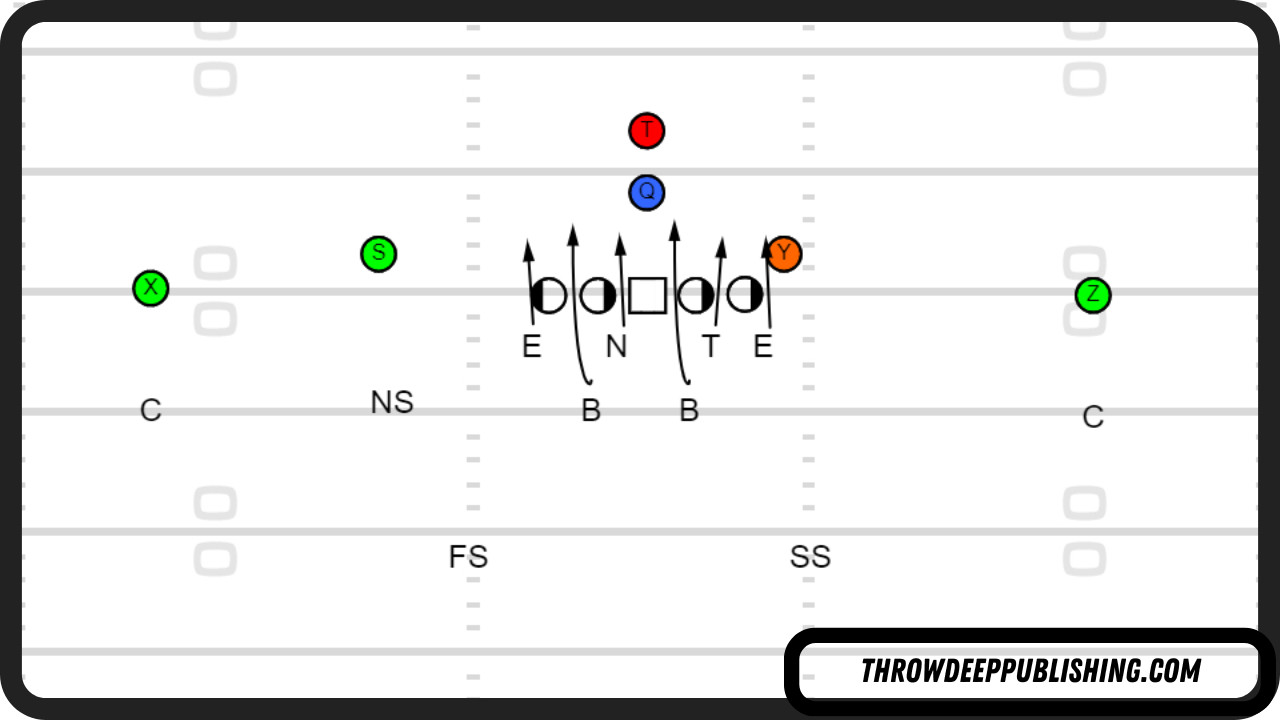 Blitz Diagram
Blitz Diagram
1.1. Key Objectives of a Blitz
- Disrupt the Quarterback: The main goal is to pressure the quarterback, forcing them to make rushed decisions or throwing inaccurate passes.
- Sack the Quarterback: Bringing the quarterback down behind the line of scrimmage results in a loss of yardage for the offense.
- Force Turnovers: Increased pressure can lead to fumbles or interceptions, giving the defense possession of the ball.
- Disrupt Timing: Messing up the timing between the quarterback and receivers can throw off the entire offensive play.
1.2. Number of Players Involved in a Blitz
A blitz typically involves sending five to seven players after the quarterback, although some teams may send even more in high-risk situations. The decision to blitz depends on various factors, including the game situation, the opponent’s offensive tendencies, and the strengths and weaknesses of both teams.
According to Pro Football Focus, successful blitzing teams often have a high rate of pressure without sacrificing coverage integrity. This requires a well-coordinated defensive scheme and disciplined players who can execute their assignments effectively.
2. The Role of Coaches in Implementing the Blitz
Defensive coordinators play a crucial role in deciding when and how to use the blitz. They analyze game footage, study the opponent’s tendencies, and design specific blitz packages to exploit weaknesses in the offensive line. A well-timed blitz can disrupt the offensive rhythm and force turnovers, while a poorly executed blitz can leave the defense vulnerable to big plays.
Nick Saban, renowned for his defensive strategies, often emphasizes the importance of disguising blitzes to confuse the offensive line and quarterback.
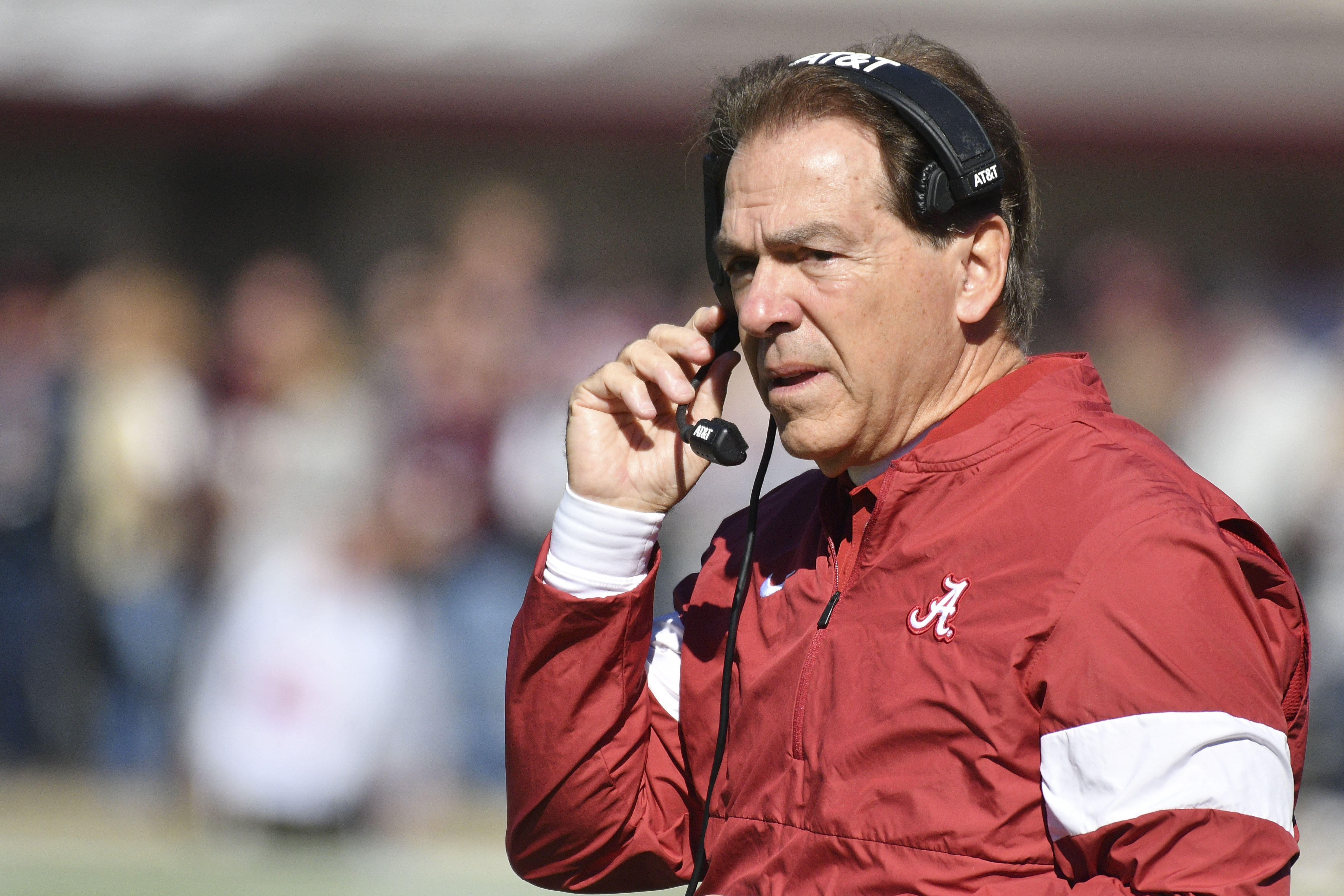 Nick Saban Blitz
Nick Saban Blitz
2.1. Responsibilities of the Defensive Coordinator
- Play Calling: The defensive coordinator is typically responsible for calling the defensive plays, including blitzes.
- Game Planning: Analyzing the opponent’s offensive tendencies and developing strategies to counter them.
- Personnel Decisions: Determining which players are best suited to execute specific blitz packages.
- Adjustments: Making in-game adjustments based on how the offense is responding to the blitz.
2.2. Impact of a Great Defense
A strong defense, augmented by well-timed blitzes, can significantly reduce the pressure on the offense. This allows the offense to focus on scoring without needing to constantly play catch-up. A study by the NFL Research team found that teams with top-ranked defenses are more likely to make the playoffs and advance further in the postseason.
3. Types of Blitzes in Football
While the basic concept of a blitz involves sending extra defenders after the quarterback, there are several variations that defensive coordinators can use to confuse the offense and maximize their chances of success.
3.1. Zone Blitz
In a zone blitz, a linebacker or defensive back blitzes while a defensive lineman drops back into coverage. This type of blitz is designed to create confusion for the offensive line and quarterback, making it difficult to identify the pass rushers and adjust their blocking assignments accordingly.
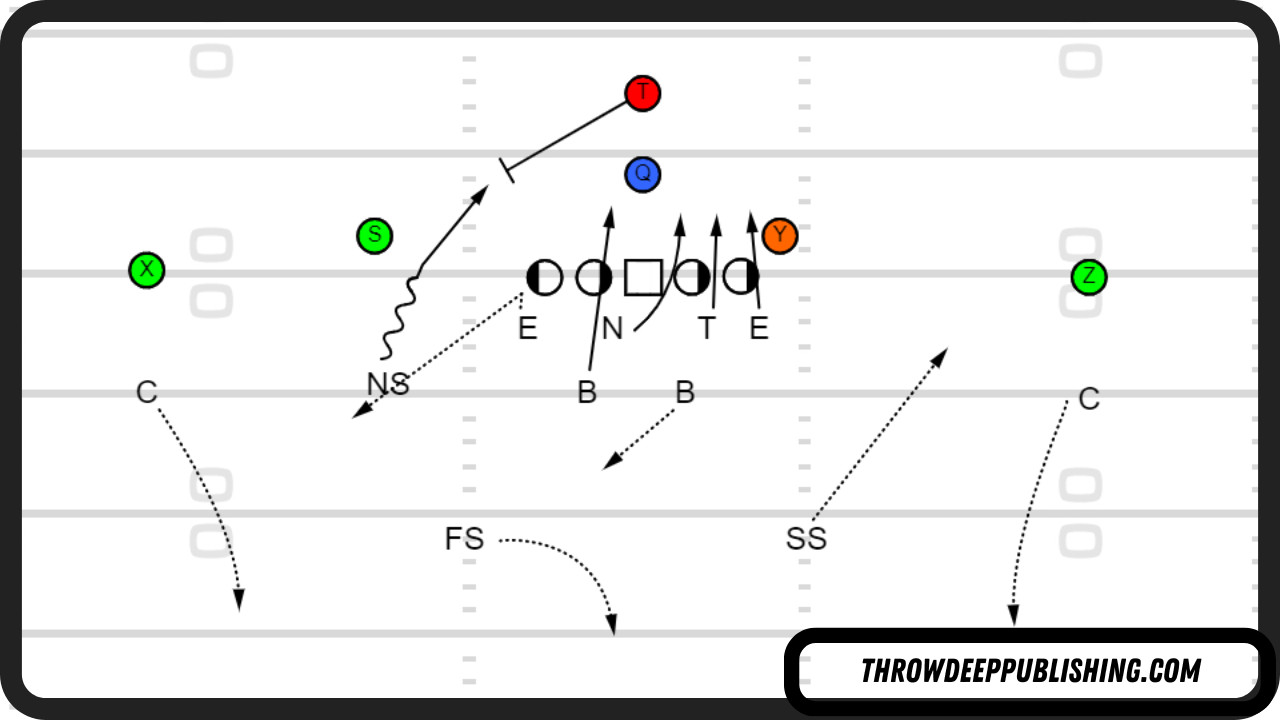 Zone Blitz
Zone Blitz
3.2. Safety Blitz
A safety blitz involves one of the safeties coming down to blitz the quarterback. This can be a high-risk, high-reward strategy, as it leaves the defense vulnerable to deep passes if the quarterback can evade the blitz.
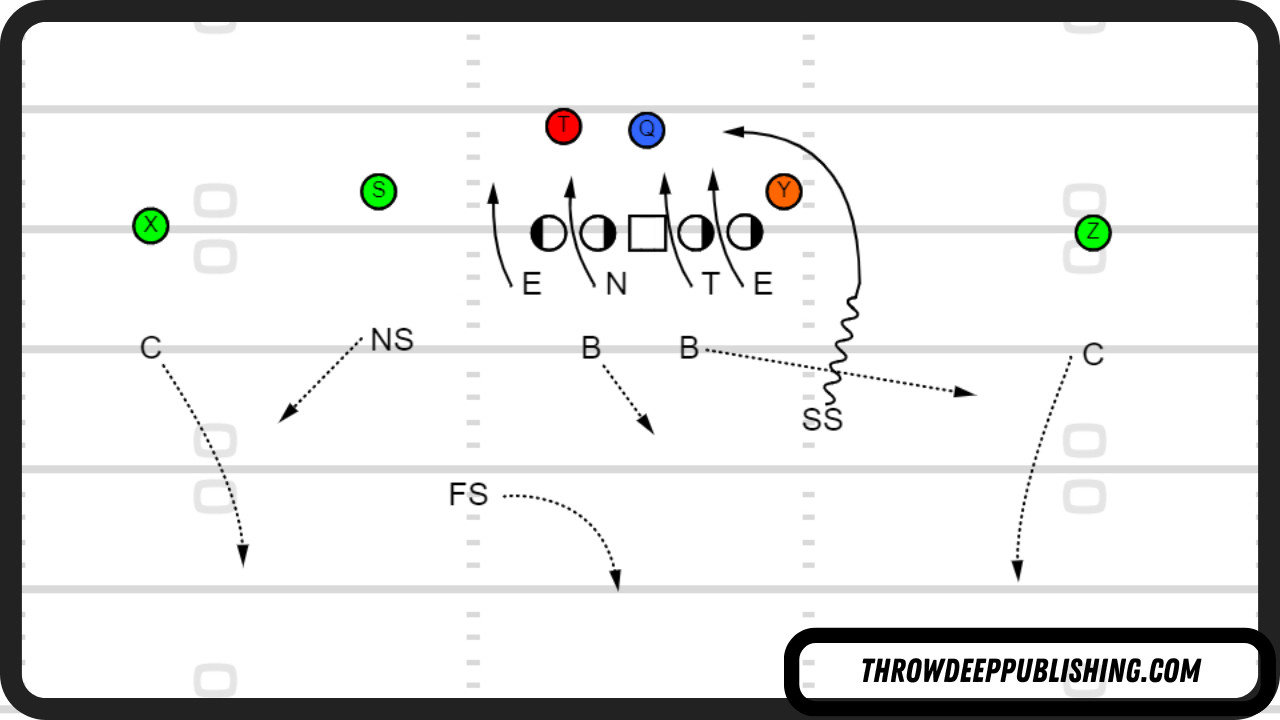 Safety Blitz
Safety Blitz
3.3. Cornerback Blitz
Similar to a safety blitz, a cornerback blitz involves the cornerback rushing the quarterback. This can create an element of surprise, as cornerbacks are typically responsible for covering wide receivers.
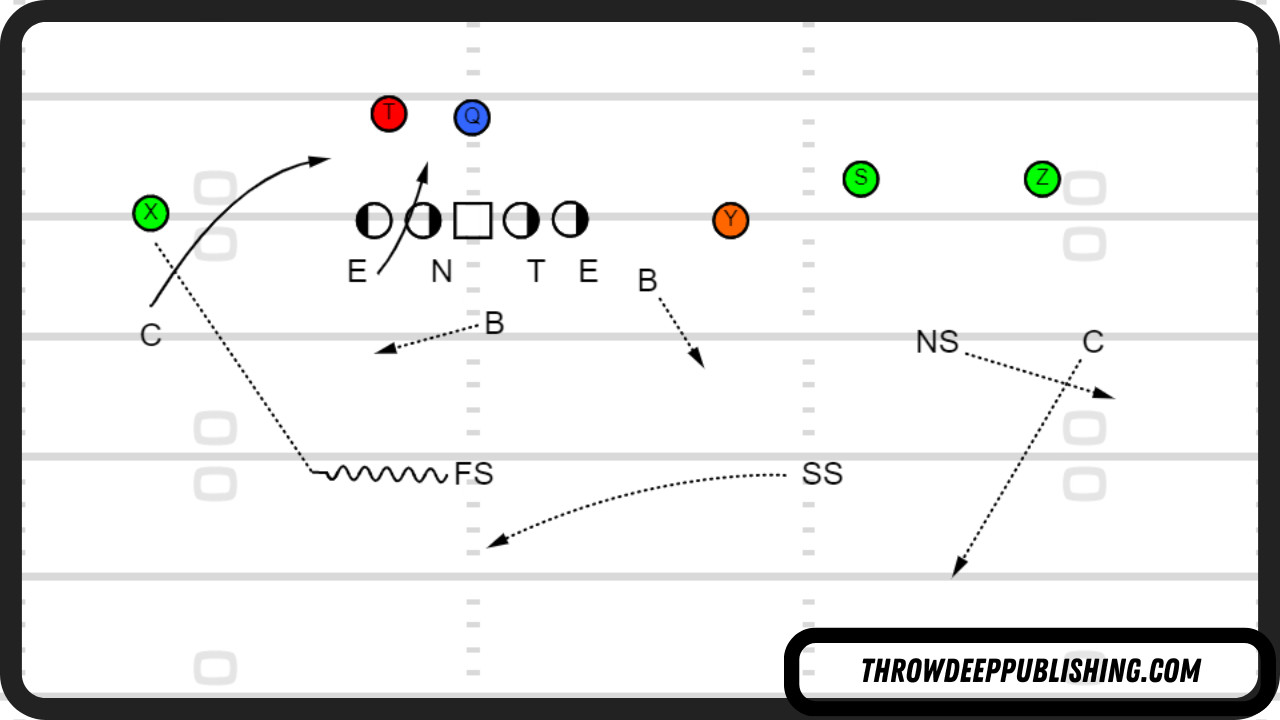 Corner Blitz
Corner Blitz
3.4. Zero Blitz
A zero blitz is the most aggressive type of blitz, with no deep safety to provide coverage. This strategy is typically used in situations where the defense is desperate to stop the offense, such as on third down with short yardage to gain.
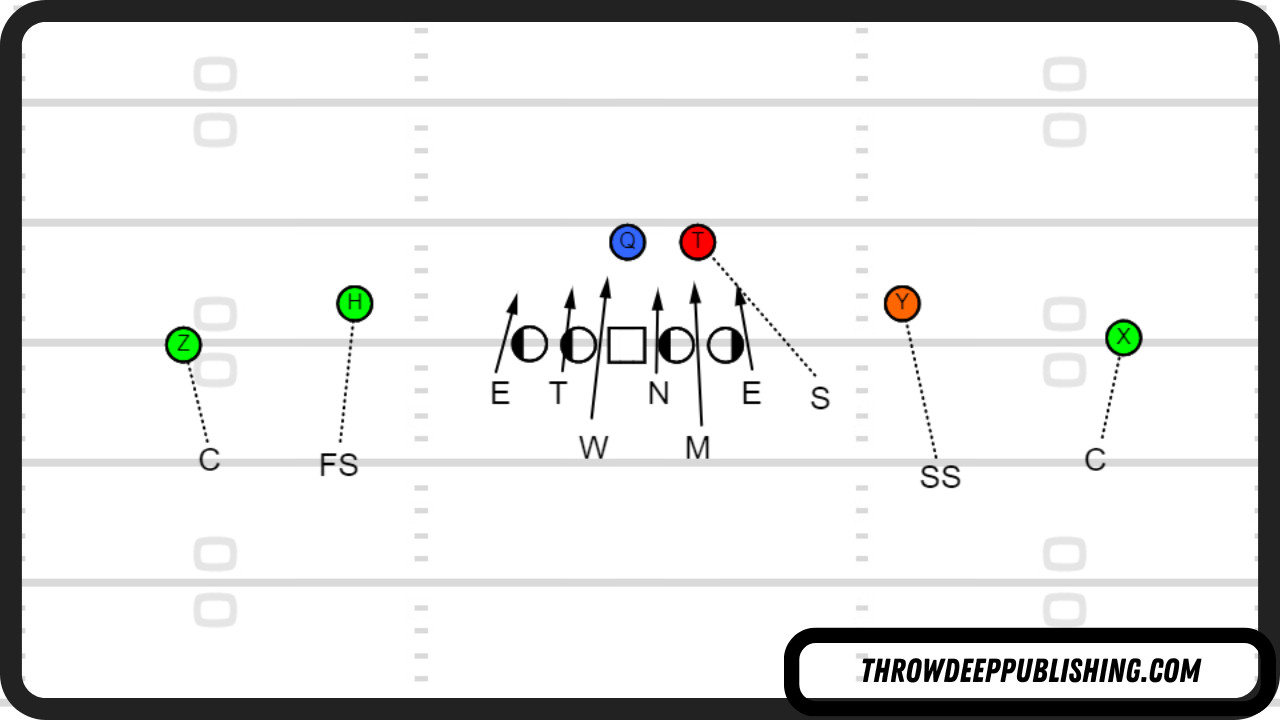 Cover Zero Blitz
Cover Zero Blitz
3.5. Run Blitz
A run blitz is designed to disrupt the running game by sending extra defenders into the box to stop the ball carrier. This strategy is effective against teams that rely heavily on running the ball.
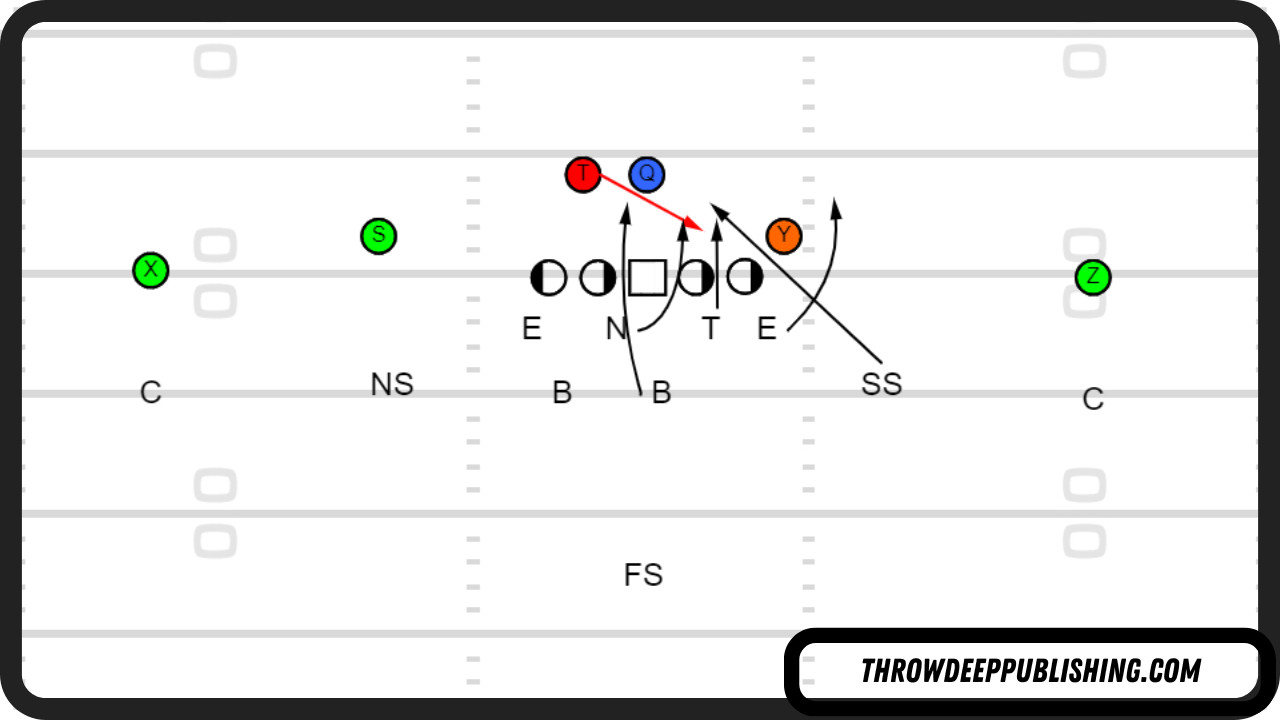 Run Blitz
Run Blitz
4. Strategies to Counter the Blitz
While a well-executed blitz can be devastating to an offense, there are several strategies that offenses can use to mitigate its effectiveness.
4.1. Quick Passes
One of the most effective ways to counter a blitz is to throw quick passes to receivers who are open before the pass rush can reach the quarterback. This requires the quarterback to quickly identify the blitz and make a fast, accurate throw.
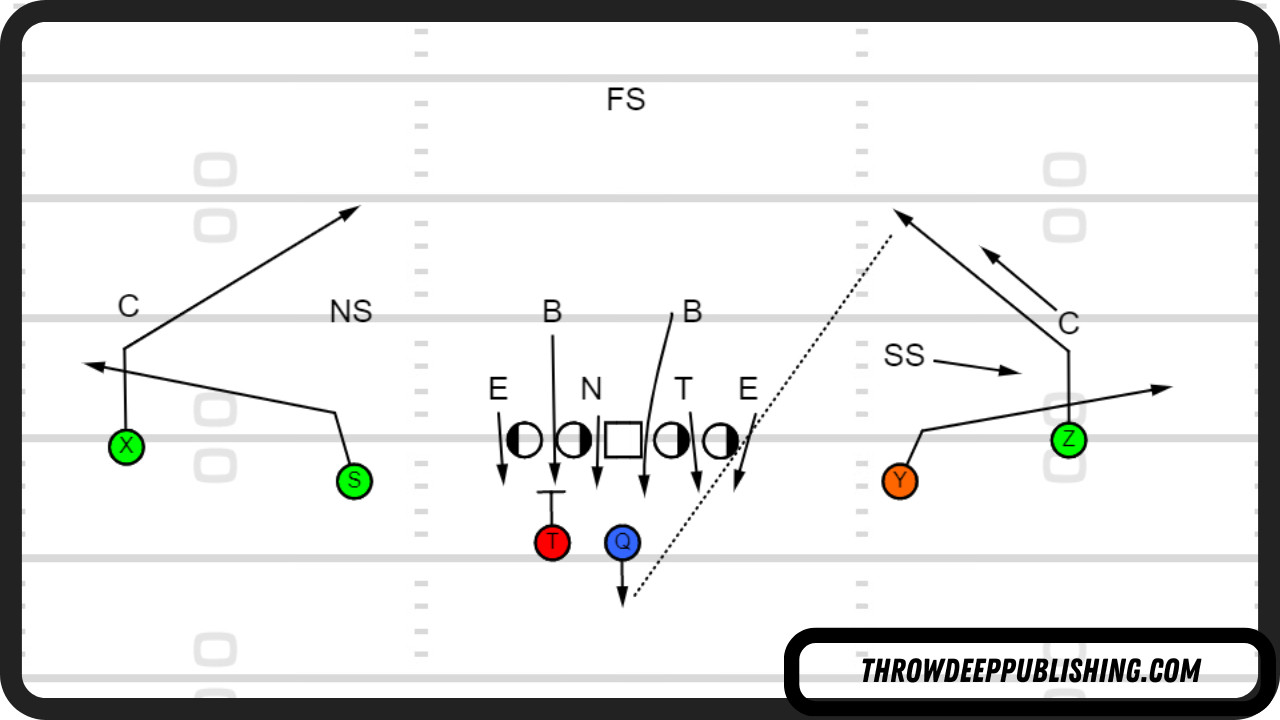 Quick Pass
Quick Pass
4.2. Mobile Quarterbacks
Quarterbacks with good mobility can evade the blitz by using their speed and agility to escape the pass rush and make plays with their legs. This puts pressure on the defense to maintain their pursuit and prevent the quarterback from making big gains.
4.3. Max Protection
An offense can use a max protection scheme to provide extra blockers for the quarterback, giving them more time to throw the ball. This typically involves keeping running backs and tight ends in to block, rather than sending them out on pass routes.
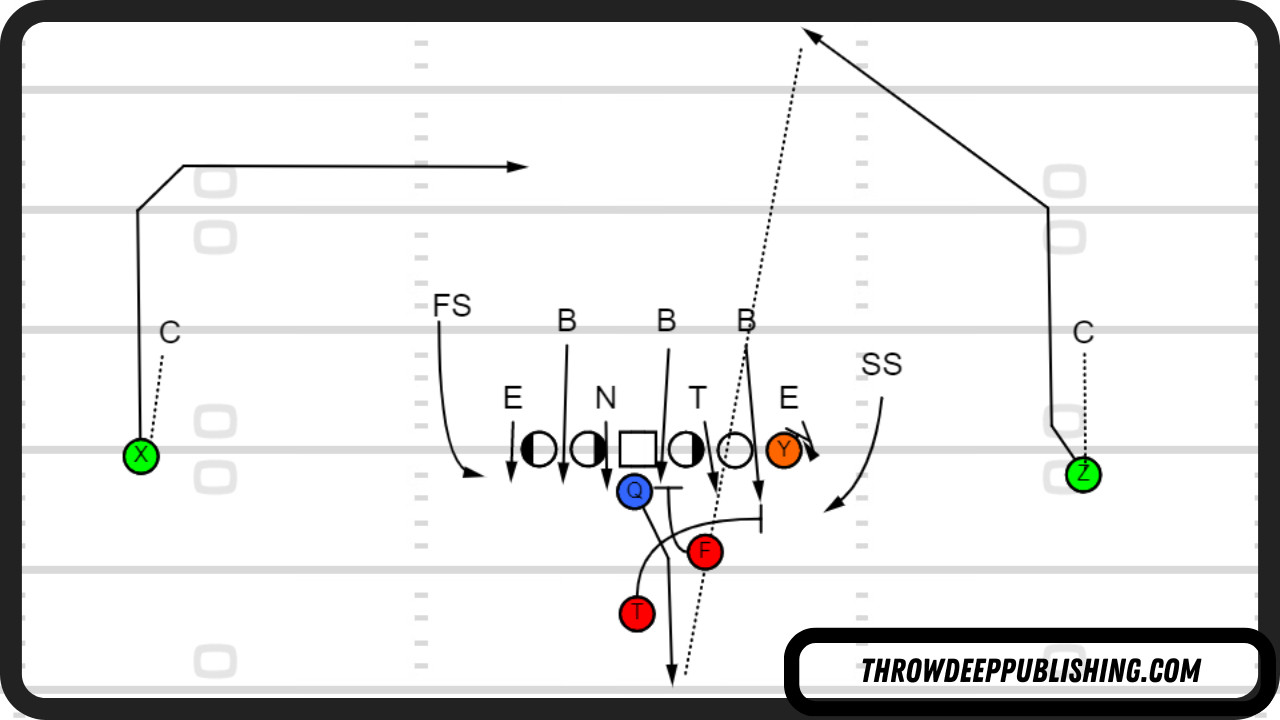 Max Protection Pass
Max Protection Pass
4.4. Audible Adjustments
Quarterbacks can also adjust the play at the line of scrimmage (audible) if they recognize an incoming blitz. This allows them to change the play to a more favorable one that can exploit the blitz.
4.5. Screen Passes
Screen passes to running backs or wide receivers can be an effective way to counter a blitz by using the aggressiveness of the blitz against the defense. A well-executed screen pass can result in a big gain if the blockers can get in front of the receiver and clear a path to the end zone.
5. The Reward and Risk of Blitzing
Blitzing is a calculated gamble that can yield significant rewards but also carries considerable risks.
5.1. Potential Benefits
- Increased Pressure: More pass rushers increase the likelihood of pressuring the quarterback, leading to mistakes and turnovers.
- Disrupted Timing: Blitzes can disrupt the timing between the quarterback and receivers, making it harder for the offense to execute their plays.
- Forced Errors: The chaos caused by a blitz can lead to offensive holding penalties or false start penalties.
5.2. Potential Risks
- Exposed Coverage: Sending extra players to blitz leaves fewer defenders to cover receivers, potentially leading to big plays.
- Missed Assignments: If a blitz is not executed correctly, it can leave defenders out of position and vulnerable to the run.
- Exploitable Matchups: A poorly designed blitz can create favorable matchups for the offense, such as a smaller cornerback covering a larger receiver.
6. Notable Defensive Coordinators Known for Blitzing
Several defensive coordinators have made a name for themselves with their aggressive blitzing schemes. These coaches are known for their creativity and ability to design blitzes that exploit the weaknesses of opposing offenses.
6.1. Bill Belichick
Widely regarded as one of the greatest football coaches of all time, Bill Belichick is known for his innovative defensive schemes and his willingness to use the blitz to disrupt opposing offenses.
6.2. Dick LeBeau
Dick LeBeau, the architect of the Pittsburgh Steelers’ “Steel Curtain” defense, was a master of the zone blitz and used it to create pressure on quarterbacks while still maintaining coverage integrity.
6.3. Wade Phillips
Wade Phillips is known for his aggressive, attacking defenses that rely heavily on the blitz to create pressure and force turnovers.
7. The Evolution of the Blitz
The blitz has evolved significantly over the years, from a simple strategy of sending extra defenders after the quarterback to a complex and nuanced tactic that involves a variety of different blitz packages and coverages.
7.1. Early Days of Football
In the early days of football, the blitz was a relatively simple concept, with teams primarily using it to stop the run.
7.2. Modern Era
In the modern era, the blitz has become a more sophisticated and versatile weapon, with teams using it to attack both the run and the pass.
8. Analyzing NFL Blitz Statistics
Analyzing NFL blitz statistics can provide valuable insights into the effectiveness of different blitzing strategies and the impact of the blitz on offensive performance.
8.1. Blitz Percentage
Blitz percentage is the percentage of passing plays on which a team sends five or more pass rushers.
8.2. Sack Rate
Sack rate is the percentage of passing plays on which the quarterback is sacked.
8.3. Pressure Rate
Pressure rate is the percentage of passing plays on which the quarterback is pressured.
9. How to Improve Your Understanding of Football Blitzes
If you want to improve your understanding of football blitzes, there are several resources available to you.
9.1. Watch Games
One of the best ways to learn about football blitzes is to watch games and pay attention to the defensive strategies that teams are using.
9.2. Study Film
Studying film can provide you with a more detailed understanding of how blitzes are designed and executed.
9.3. Read Articles and Books
There are many articles and books available that can provide you with more information about football blitzes.
10. Frequently Asked Questions (FAQ) About the Blitz in Football
Here are some frequently asked questions about the blitz in football:
Q1: What Is A Blitz In Football?
A: A blitz is a defensive strategy where five or more defenders rush the quarterback.
Q2: Why do teams use the blitz?
A: To pressure the quarterback, disrupt the offense, and force turnovers.
Q3: What are the different types of blitzes?
A: Zone blitz, safety blitz, cornerback blitz, zero blitz, and run blitz.
Q4: How can an offense counter the blitz?
A: Quick passes, mobile quarterbacks, max protection, and audible adjustments.
Q5: What are the risks of blitzing?
A: Leaving fewer defenders in coverage and creating mismatches.
Q6: Who decides when to blitz?
A: The defensive coordinator.
Q7: Is blitzing always effective?
A: No, it depends on the game situation and the opponent’s offensive capabilities.
Q8: What is a zero blitz?
A: A blitz with no deep safety coverage.
Q9: How many players are typically involved in a blitz?
A: Five to seven players.
Q10: Can a blitz be used to stop the run?
A: Yes, a run blitz is designed to disrupt the running game.
Understanding the blitz is crucial for any football fan. By recognizing the different types of blitzes, their objectives, and how offenses counter them, you can significantly enhance your appreciation of the game. For more in-depth analysis and insights, visit CAUHOI2025.UK.COM, where you can find expert opinions and detailed breakdowns of football strategies. Whether you’re a player, coach, or fan, CAUHOI2025.UK.COM provides the resources you need to elevate your football IQ.
Conclusion
The blitz is a dynamic and multifaceted strategy that adds an exciting layer of complexity to football. It’s a high-stakes gamble that, when executed correctly, can change the momentum of a game. By understanding the nuances of the blitz, you’ll gain a deeper appreciation for the strategic battles that unfold on the gridiron.
Ready to explore more football strategies and tactics? Visit CAUHOI2025.UK.COM today for comprehensive guides, expert analysis, and the latest updates from the world of football. Don’t just watch the game – understand it!
Need more answers or personalized advice? Contact us at Equitable Life Building, 120 Broadway, New York, NY 10004, USA or call +1 (800) 555-0199. You can also visit our website at CauHoi2025.UK.COM for more information. We’re here to help you understand the game better!

